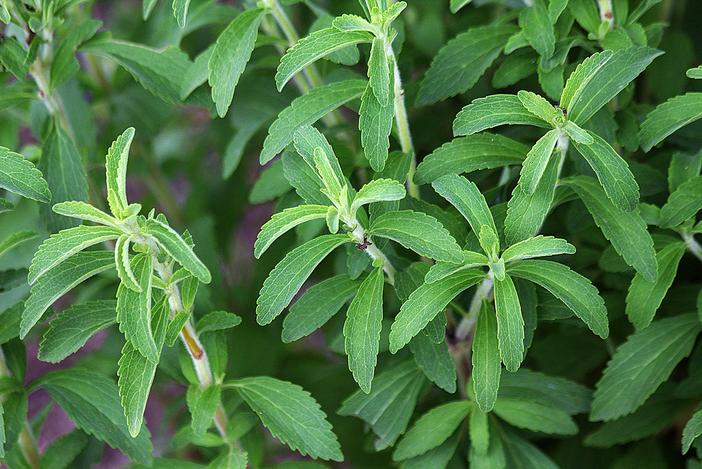Candyleaf
(Stevia rebaudiana)
Candyleaf (Stevia rebaudiana)
/
/

manuel m. v.
CC BY 2.0
Image By:
manuel m. v.
Recorded By:
Copyright:
CC BY 2.0
Copyright Notice:
Photo by: manuel m. v. | License Type: CC BY 2.0 | License URL: https://creativecommons.org/licenses/by/2.0/ | Uploader: M. Martin Vicente | Publisher: Flickr
























Estimated Native Range
Summary
Stevia rebaudiana, commonly known as Candyleaf or Stevia, is a semi-deciduous perennial herb native to the grasslands and semi-arid regions of Paraguay and Brazil. It typically grows to a height of 30–60 centimeters (1–2 feet) and features small, lanceolate leaves that are arranged oppositely along the stems. The white flowers, which may have light purple accents, bloom in late summer to fall and are not particularly showy. The plant does not produce notable fruit, but rather inconspicuous, dry, one-seeded fruits after flowering. Stevia is primarily cultivated for its sweet leaves, which are harvested to produce a calorie-free sweetener.
In cultivation, Stevia is valued for its sweet leaves, which are a natural alternative to artificial sweeteners. It is commonly used in herb gardens and as an edging plant. Stevia requires a warm climate and cannot tolerate frost; in cooler regions, it is grown as an annual or in greenhouses. It thrives in full sun to part shade, with medium water requirements, and prefers well-drained soils. While it is not prone to many diseases, root rot can occur in poorly drained soils. Stevia can also be sensitive to cold temperatures and requires protection or overwintering indoors in temperate zones.CC BY-SA 4.0
In cultivation, Stevia is valued for its sweet leaves, which are a natural alternative to artificial sweeteners. It is commonly used in herb gardens and as an edging plant. Stevia requires a warm climate and cannot tolerate frost; in cooler regions, it is grown as an annual or in greenhouses. It thrives in full sun to part shade, with medium water requirements, and prefers well-drained soils. While it is not prone to many diseases, root rot can occur in poorly drained soils. Stevia can also be sensitive to cold temperatures and requires protection or overwintering indoors in temperate zones.CC BY-SA 4.0
Plant Description
- Plant Type: Herb
- Height: 1-2 feet
- Width: 1-2 feet
- Growth Rate: Moderate
- Flower Color: White
- Flowering Season: Summer
- Leaf Retention: Evergreen
Growth Requirements
- Sun: Full Sun, Part Shade
- Water: Medium
- Drainage: Medium, Slow
Common Uses
Edible*Disclaimer: Easyscape's listed plant edibility is for informational use. Always verify the safety and proper identification of any plant before consumption., Fragrant, Potted Plant, Salt Tolerant
Natural Habitat
Native to grasslands and semi-arid regions of Paraguay and Brazil
Other Names
Common Names: Sweetleaf , Sugarleaf , Stevia , Sweet-Leaf-Of-Paraguay , Azucaca , Paraguay-Stevie , Stévia , Sötflockel , Folha-Doce , Estévia
Scientific Names: Stevia rebaudiana , Eupatorium rebaudianum
GBIF Accepted Name: Stevia rebaudiana (Bertoni) Bertoni